The language of architecture. A contribution to architectural theory
4.0
بر اساس نظر کاربران

شما میتونید سوالاتتون در باره کتاب رو از هوش مصنوعیش بعد از ورود بپرسید
هر دانلود یا پرسش از هوش مصنوعی 2 امتیاز لازم دارد، برای بدست آوردن امتیاز رایگان، به صفحه ی راهنمای امتیازات سر بزنید و یک سری کار ارزشمند انجام بدینکتاب های مرتبط:
معرفی کامل کتاب: The language of architecture. A contribution to architectural theory
کتاب The Language of Architecture. A Contribution to Architectural Theory نوشته نیلز لونینگ پراک یکی از آثار ماندگار در حوزه نظریه معماری است که به بررسی زبان معماری بهعنوان پدیدهای فرهنگی، فنی، و هنری میپردازد. این کتاب با دیدگاهی عمیق و تحلیلی، به مطالعه اصول و مبانی معماری پرداخته و به ارائه چارچوبی تازه برای فهم معماری بهعنوان یک زبان وایسته بین انسان و محیط میپردازد. لونیگ پراک در این اثر، تلاش کرده است معماری را نه صرفاً بهعنوان عملی طراحی، بلکه بهعنوان یک سیستم ارتباطی پیچیده تحلیل کند.
خلاصهای دقیق از کتاب
این کتاب در چندین بخش مختلف به تحلیل ساختار زبان معماری میپردازد. لونیگ پراک بر این باور است که معماری زبان خاص خود را دارد که از عناصر گوناگون همچون فرم، بافت، نور، فضا و حتی رنگ تشکیل شده است. این عناصر در ترکیب با قصد و هدف معمار، معنا و مفهومی عمیقتر به پروژههای معماری میبخشند.
در بخشهای آغازین، نویسنده به تاریخچهای کوتاه از ارتباط میان هنر، زبان و معماری میپردازد و تأثیر فرهنگ در زبان معماری را مورد بررسی قرار میدهد. سپس، او به توضیح ابزارهای مختلف معماری از جمله استفاده از اشکال هندسی، مقیاس، تناسبها و حس هماهنگی در طراحی اشاره میکند. در سایر فصلهای کتاب نیز مبانی تئوری و عملی دیگری همچون کاربرد فضا، نقش انسان در فرایند ساختاردهی محیط، و تأثیر معماری بر رفتار انسانی مورد بحث قرار گرفته است.
نکات کلیدی کتاب
- معماری دارای زبان خاصی است که ورای فرمهای فیزیکی عمل میکند.
- ارتباط میان معماری و انسان از طریق مفاهیم ارتباطی قابل تحلیل است.
- فرآیند طراحی نه تنها به زیباییشناسی بلکه به اصول کاربردی و کارکردی وابسته است.
- عناصر اصلی مؤثر در معماری عبارتند از نور، فضا، بافت و مقیاس.
- تأثیر اجتماعی و فرهنگی معماری بر جوامع، بخشی جداییناپذیر از نظریه معماری است.
نقلقولهای مشهور از کتاب
"معماری تنها طراحی فضا نیست؛ بلکه خلق یک زبان منحصربهفرد برای ارتباط با انسانها است."
"هر بنا، داستانی را روایت میکند؛ داستانی که با فرم، نور، و مقیاس نوشته شده است."
چرا این کتاب اهمیت دارد؟
The Language of Architecture. A Contribution to Architectural Theory یکی از منابع بنیادی برای دانشجویان و علاقمندان به حوزه معماری است. این کتاب، دیدگاه جامعی را در زمینه روند طراحی و تحلیل سازهها ارائه میدهد و خوانندگان را دعوت میکند تا به معماری نه تنها بهعنوان یک رشته هنری بلکه بهعنوان زبانی برای بیان ایدهها نگاه کنند.
علاوه بر این، این کتاب بر اهمیت ارتباط میان معماری و زندگی روزمره انسانها تأکید دارد، و تلاش میکند تا نشان دهد چگونه طراحی محیط میتواند تجربه انسان را تحت تأثیر قرار دهد. ترکیب دانش نظری با نمونههای عملی و تحلیل دقیق، این کتاب را به منبعی ماندگار در نظریه معماری تبدیل کرده است.
Introduction
"The Language of Architecture: A Contribution to Architectural Theory" is a seminal work dedicated to understanding the essence of architectural communication. Written by Niels Luning Prak, this book offers an in-depth exploration of how architecture transcends its materiality to become a medium of expression, a reflection of societal values, and a language in itself. Designed for both experts and enthusiasts, this theoretical contribution delves into the principles, methods, and philosophies that define architectural design and theory.
Through Prak's meticulous analysis, the reader is invited to discover how architecture can be interpreted, read, and appropriated as a system of meaning. This book not only appeals to students and professionals within the field but also enriches anyone keen to uncover the deeper roles architecture plays in shaping human experience.
Detailed Summary
Decomposing the complexity of architectural theory into accessible layers, Niels Luning Prak methodically examines the relationship between form, function, and meaning.
The book begins by addressing the foundations of architectural language as a theoretical construct. Prak explains how design elements—ranging from structure to materiality—function as "words" and "sentences" within the broader "grammar" of architecture. By drawing parallels with linguistics, he unveils the semiotic principles underlying architectural design, emphasizing how buildings communicate through metaphor, symbolism, and cultural context.
As the book progresses, Prak explores the interplay between design and human perception. He highlights how architecture not only adapts to human needs but also shapes behaviors, emotions, and spatial awareness. He includes case studies to illustrate how architectural innovations serve as responses to specific social, technological, and environmental challenges.
Another crucial aspect of "The Language of Architecture" is its focus on bridging the gap between theory and practice. Each chapter builds toward integrating abstract concepts with practical design methodologies, enabling architects to form deeper connections between their creative intuition and the communicative power of their designs.
Key Takeaways
- Architecture as a Language: Discover how architectural forms act as mediums of communication, telling stories, expressing identities, and conveying cultural values.
- Principles of Semiotics: Learn how to "read" architecture by understanding the symbolic meanings of its elements.
- Human Interaction: Gain insights into how architecture influences human experience and behavior, creating connections between the built environment and its users.
- Theory in Practice: Understand how to apply architectural theory directly into real-world design approaches, from concept to execution.
- Timeless Relevance: Explore how architectural theory transcends eras, constantly evolving to meet modern societal, technological, and environmental demands.
Famous Quotes from the Book
Niels Luning Prak's eloquent writing is filled with thought-provoking insights. Here are some of the most memorable quotes from the book:
- "Architecture is not mere construction; it is humanity’s attempt to shape the void with meaning."
- "Every building has its language, and it is our task to listen."
- "The relationship between form and function is not fixed but fluid, evolving with time and context."
- "A successful building is one that communicates beyond its geometry, touching the emotions and intellect of its observer."
- "Design is not just the art of bringing shapes to life; it is the mastery of making them speak to the human soul."
Why This Book Matters
"The Language of Architecture" remains a foundational text in architectural theory for several reasons:
First and foremost, the book offers a unique perspective on architecture as a communicative system, framing design as something far greater than functional or aesthetic considerations. By positioning architecture as a language, Prak elevates the role of the architect to a cultural storyteller.
Secondly, its interdisciplinary approach broadens the reader's understanding of architecture by weaving in principles from semiotics, psychology, sociology, and philosophy. This holistic perspective ensures that the book stays relevant across disciplines, making it appealing to historians, theorists, and designers alike.
Lastly, the timeless themes covered in the book resonate with the challenges of modern architecture—whether it be sustainability, urbanization, or the quest for meaningful public spaces. It inspires architects to look beyond fleeting trends and focus on creating structures that transcend functionality to nurture human connection and identity.
Overall, "The Language of Architecture" continues to illuminate the mind of any reader passionate about the intricate interplay between design and meaning.
دانلود رایگان مستقیم
شما میتونید سوالاتتون در باره کتاب رو از هوش مصنوعیش بعد از ورود بپرسید
دسترسی به کتابها از طریق پلتفرمهای قانونی و کتابخانههای عمومی نه تنها از حقوق نویسندگان و ناشران حمایت میکند، بلکه به پایداری فرهنگ کتابخوانی نیز کمک میرساند. پیش از دانلود، لحظهای به بررسی این گزینهها فکر کنید.
این کتاب رو در پلتفرم های دیگه ببینید
WorldCat به شما کمک میکنه تا کتاب ها رو در کتابخانه های سراسر دنیا پیدا کنید
امتیازها، نظرات تخصصی و صحبت ها درباره کتاب را در Goodreads ببینید
کتابهای کمیاب یا دست دوم را در AbeBooks پیدا کنید و بخرید
1378
بازدید4.0
امتیاز0
نظر98%
رضایتنظرات:
4.0
بر اساس 0 نظر کاربران
Questions & Answers
Ask questions about this book or help others by answering
No questions yet. Be the first to ask!
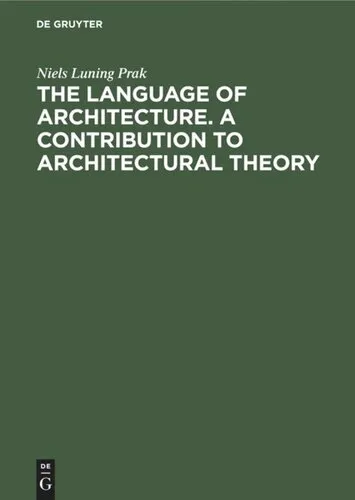

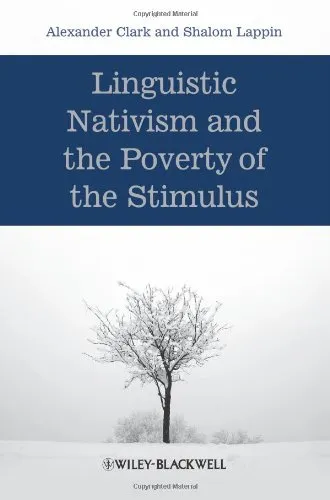

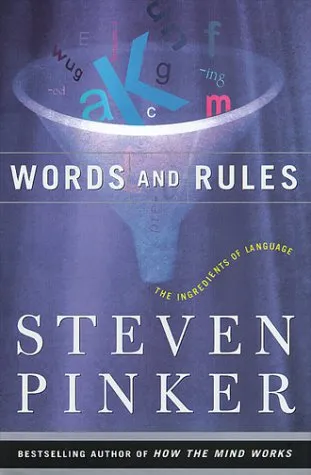
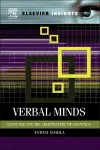
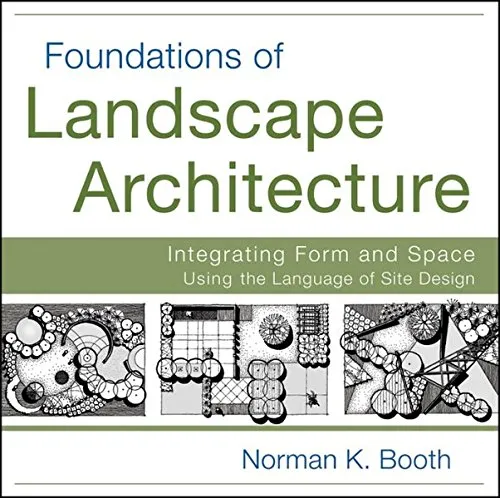
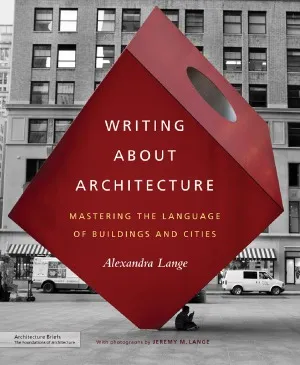
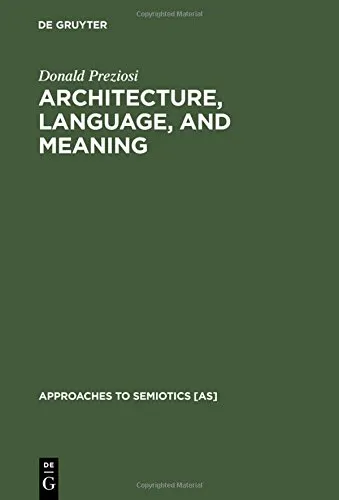
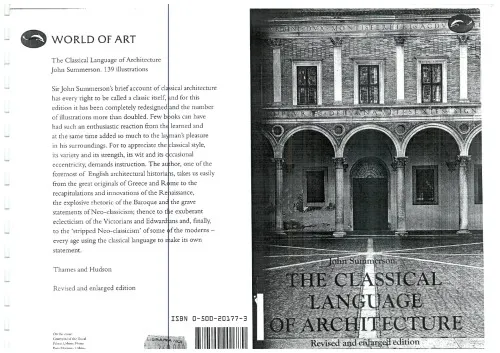
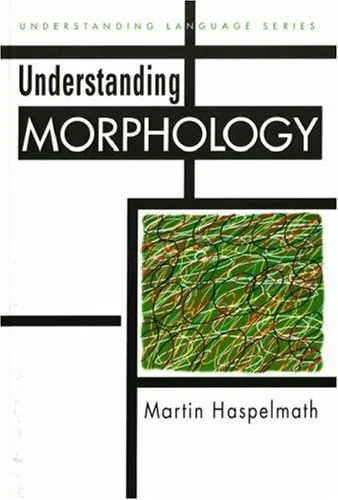


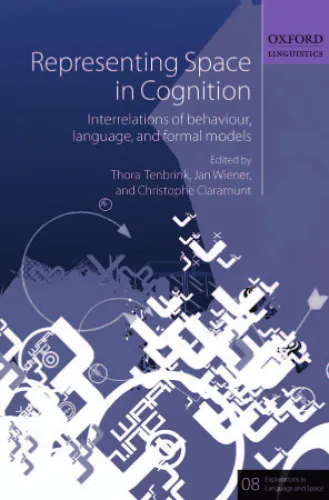
![Trends in Linguistics. Studies and Monographs [TiLSM]; 113](https://s3.refhub.ir/images/thumb/Trends_in_Linguistics__Studies_and_Monographs_43772.webp)
